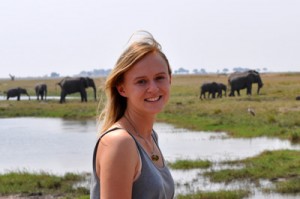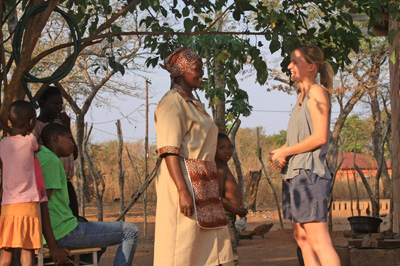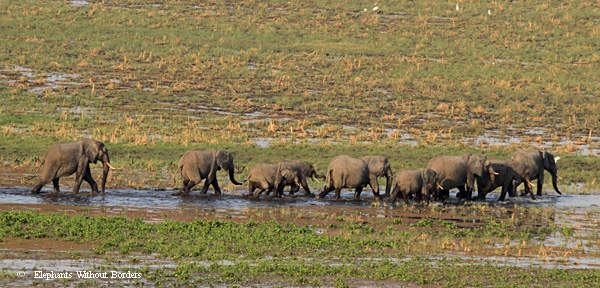Training to be an aerial observer
Tempe Adams:
“Elephant’s Without Borders have recently introduced me to the art of aerial surveying. Aerial surveys are a highly valuable tool as they allow estimates of abundance of wildlife to be determined in a specific area, and the rate of population change. See why we conduct surveys: http://www.elephantswithoutborders.org/surveys.php
With EWB aerial surveys there are observers on either side of the plane who count and photograph all large mammal species, and a few large, rare bird species, that fall within the transect boundaries. Kylie and I were trained up for this observer role. Training began on the ground, looking at previously taken aerial survey photos and noting what the various animals look like from the air. Then we did a “5 second flash” test whereby we had to identify the species and count, or estimate as may be the case with very large herds, the number present in the photo within the three seconds the photos were presented.
Next, we had training runs in the air. Flying fast while constantly scanning the ground, counting and identifying all you see within seconds is incredibly exciting and actually quite an adrenaline rush. We were very fortunate to have the opportunity to be trained as aerial observers – it is a very useful skill to have, as aerial surveys can act as the bread and butter for a conservation biologist.
After our training, we were lucky to participate on EWB’s Chobe District survey. The data obtained will be invaluable for both mine and Kylie’s studies and will act as the back bone of density estimates of elephant and giraffe populations for our specific study areas. The survey’s information will also be added to EWB’s long term datasets of the area and will assist in determining population growth or decline of many of the mammal and bird species within the district.”
Tempe Adams has joined the Elephants Without Borders team to investigate human-elephant interaction in northern Botswana for her PhD project. She is a PhD candidate under the supervision of Dr Keith Leggett at the University of New South Wales. The research will focus on why elephants choose to come into human settlements at particular times of the year, specifically during the wet/crop-producing season, when possibly elephants may have a known fear associated with past human interactions. She is also investigating the triggers which dictate elephant’s movements in a human-dominated landscape and exploring the effectiveness of small scale corridors for elephants and other wildlife within the township of Kasane and Kazangula. The study is designed to help facilitate better land use management plans at a fine-scale, local level and to help secure existing small-scale wildlife corridors.
To learn more about Elephants Without Borders, visit our website http://www.elephantswithoutborders.org/index.php
Follow us on Facebook https://www.facebook.com/elephantswithoutborders
Donate to help support our work! http://www.elephantswithoutborders.org/donate.php
- Elephants crossing the Savuti marsh
Tags: aerial survey, africa, botswana, chobe, conservation, education, elephants, human-elephant conflict, research, wildlife











Great work Tempe, keep the updates coming, lovely to see you living the dream. Rgds to Mike and Kelly
Hi, great job t you Tempe. Its a great experienced. Thank you for sharing it to us.